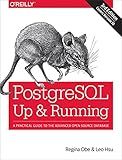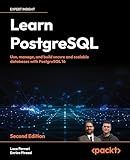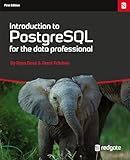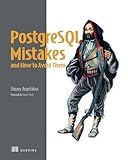Best PostgreSQL Query Optimization Techniques to Buy in January 2026

PostgreSQL: Up and Running: A Practical Guide to the Advanced Open Source Database



Learn PostgreSQL: Use, manage, and build secure and scalable databases with PostgreSQL 16



Beginning Databases with PostgreSQL: From Novice to Professional (Beginning From Novice to Professional)
- AFFORDABLE PRICES ON QUALITY PRE-OWNED BOOKS!
- ECO-FRIENDLY CHOICE: REDUCE WASTE WITH USED BOOKS.
- UNIQUE FINDS: DISCOVER RARE TITLES AND EDITIONS!



PostgreSQL 16 Administration Cookbook: Solve real-world Database Administration challenges with 180+ practical recipes and best practices



Introduction to PostgreSQL for the data professional.



PostgreSQL Mistakes and How to Avoid Them



Practical SQL, 2nd Edition: A Beginner's Guide to Storytelling with Data



Mastering PostgreSQL 17: Elevate your database skills with advanced deployment, optimization, and security strategies


To calculate years in PostgreSQL, you can use the built-in AGE() function. This function calculates the difference between two dates and returns the result in years, months, and days.
Here's an example of how you can use the AGE() function:
SELECT AGE('2022-01-01'::date, '2000-05-15'::date);
In this example, we calculate the age between '2022-01-01' and '2000-05-15'. The ::date syntax is used to explicitly cast the strings to date data type. The result will be displayed in the format of years-months-days.
If you only want to retrieve the years, you can use the EXTRACT() function in combination with AGE(). Here's an example:
SELECT EXTRACT(YEAR FROM AGE('2022-01-01'::date, '2000-05-15'::date));
This query will only return the number of years (22 in this case) between the two dates.
Remember to adjust the date inputs according to your specific requirements.
What is the method to calculate the number of years, months, days, hours, and minutes between two timestamps in Postgresql?
To calculate the number of years, months, days, hours, and minutes between two timestamps in Postgresql, you can use the age function and extract the desired components using the extract function.
Here is an example query:
SELECT EXTRACT(years FROM age(timestamp2, timestamp1)) AS years, EXTRACT(months FROM age(timestamp2, timestamp1)) AS months, EXTRACT(days FROM age(timestamp2, timestamp1)) AS days, EXTRACT(hours FROM age(timestamp2, timestamp1)) AS hours, EXTRACT(minutes FROM age(timestamp2, timestamp1)) AS minutes FROM your_table WHERE condition;
In the above query, timestamp1 and timestamp2 are two columns representing the timestamps you want to compare. your_table is the name of the table storing the timestamps, and condition is an optional condition to filter the rows.
The age function calculates the interval between the two timestamps, and the extract function is used to extract the specific components from the interval. The result will be the number of years, months, days, hours, and minutes between the timestamps.
What is the function to calculate the number of years, months, and weeks between two dates in Postgresql?
PostgreSQL provides the age() function to calculate the difference between two dates in terms of years, months, and days. However, it does not directly provide a way to calculate the difference in weeks.
Here's an example of how to use the age() function to calculate the number of years, months, and days between two dates:
SELECT age('2022-01-01'::date, '2020-02-15'::date);
This will return a result like '1 year 10 mons 17 days'.
To calculate the number of weeks between two dates, you can use the EXTRACT() function to get the number of days between the two dates and then divide it by 7:
SELECT EXTRACT(DAY FROM age('2022-01-01'::date, '2020-02-15'::date)) / 7;
This will return the number of weeks as a decimal. To get an integer result, you can use the FLOOR() function:
SELECT FLOOR(EXTRACT(DAY FROM age('2022-01-01'::date, '2020-02-15'::date)) / 7);
Keep in mind that the age() function considers only the year, month, and day components. It does not take into account leap years or varying month lengths.
How to calculate the age of a person in years using their birthdate in Postgresql?
You can calculate the age of a person in years using their birthdate in PostgreSQL by subtracting the birthdate from the current date and then extracting the number of years from the resulting interval. Here's an example:
SELECT date_part('year', age(current_date, '1990-01-01')) AS age;
In this example, '1990-01-01' is the birthdate you want to calculate the age for. The age() function calculates the difference between the current date (current_date) and the provided birthdate. The date_part('year', interval) function is then used to extract the number of years from the resulting interval. The result will be the age of the person in years.
